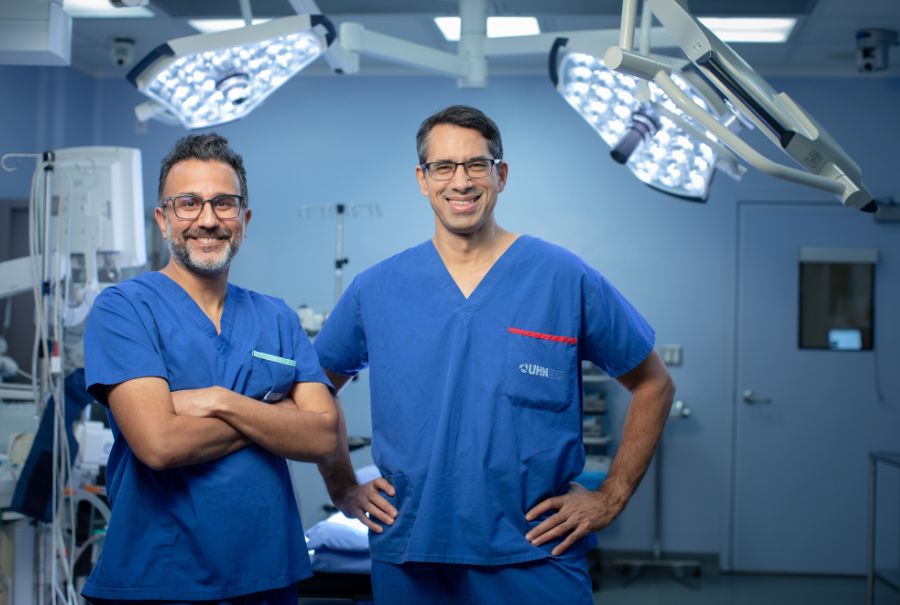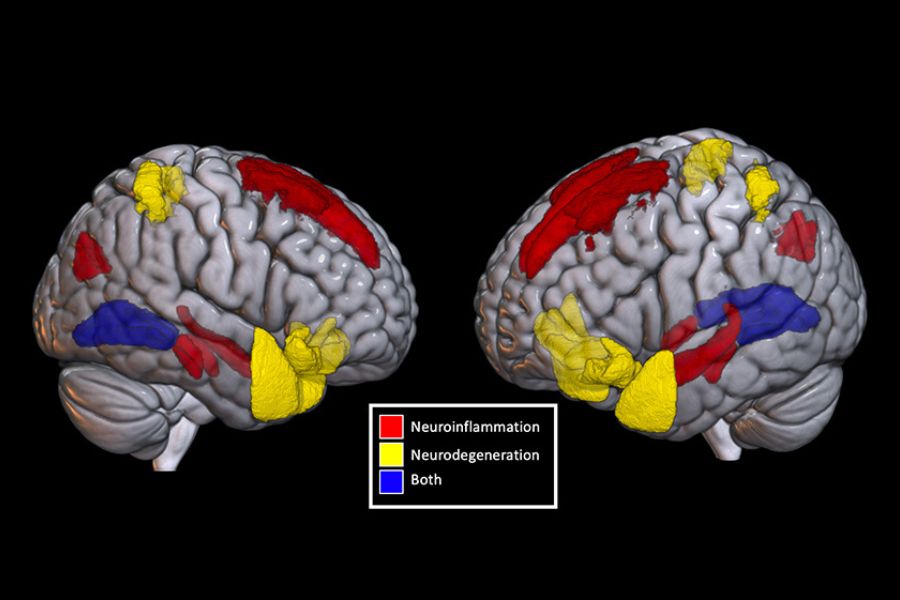Schwannomas are one of the most common posterior fossa brain tumours and the most common spinal tumour. They stem from schwann cells, which are the cells that surround nerves and are critical in nerve function.
While schwannomas are benign tumors, often they can cause debilitating symptoms depending on their location and size. Schwannomas can cause significant long-lasting neurological deficits due to a compromising of the nerve they arise from or a compression of the brain and spinal cord structures they compress. In rare cases, there can be swelling of the brain or death depending on the location of the tumours. Schwannomas can occur either sporadically or in the context of a genetic predisposition called neurofibromatosis.

Dr. Gelareh Zadeh, Head of Surgical Oncology at UHN, along with Scientific Associate Dr. Sameer Agnihotri and Senior Scientist Dr. Ken Aldape, both of the MacFeeters-Hamilton Neuro-oncology Program
The team performed a comprehensive and integrative multi-platform molecular analysis of brain and spinal schwannomas, describing new mutations in genes that are associated with the development of schwannomas. Principal Investigator Dr. Gelareh Zadeh says that this work has identified new molecular alterations as drivers of schwannoma growth that have not previously been known and notes that the most exciting aspect of the study is that the results can change the course of treatment for some schwannomas.
“Our work underlines the value of translational science carried out best through an international team approach,” says Dr. Zadeh, who is also a neurosurgeon at the Krembil Neuroscience Centre, Toronto Western Hospital. “We analyzed clinical samples using state-of-the-art molecular techniques in collaboration with expertise within UHN and internationally to establish fusion breakpoints, mutations, and targeted molecular sequencing of tumour samples.”


